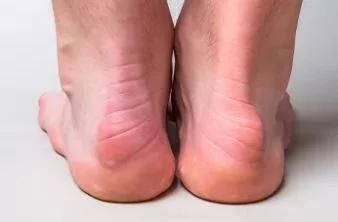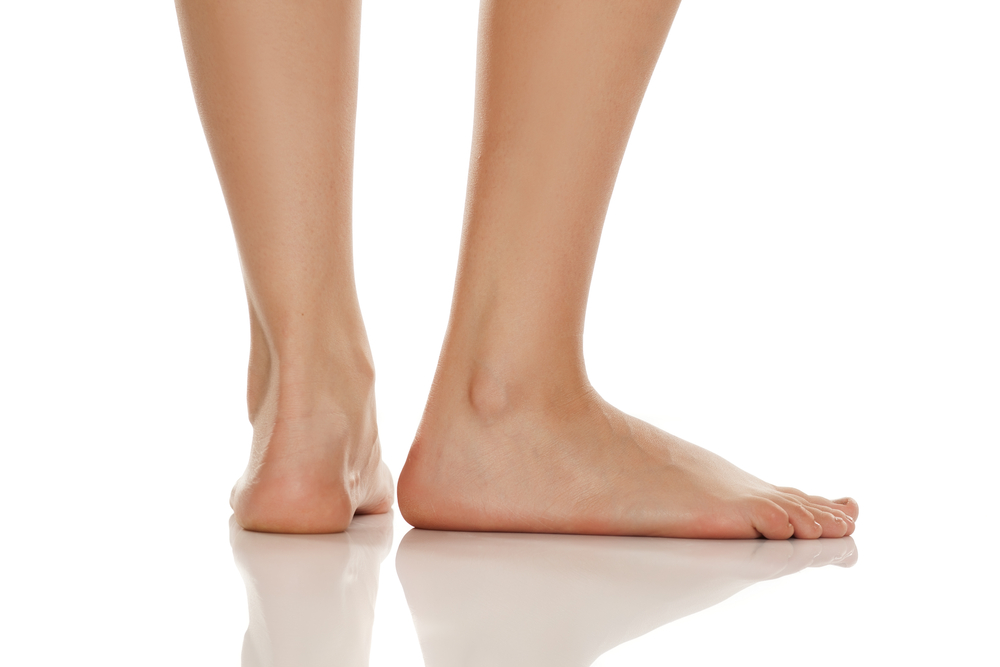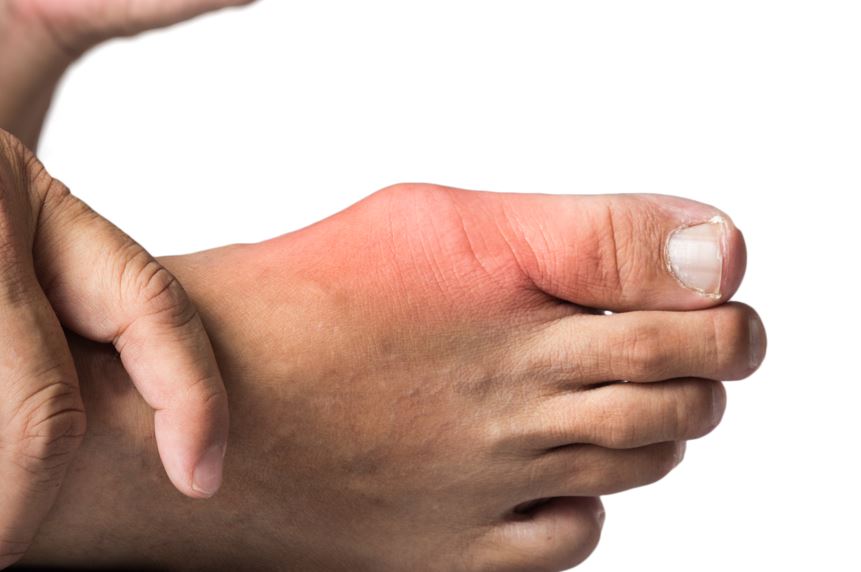Haglunds deformity is a painful bony prominence at the back of the heel bone (calcaneus). It is usually associated with a bursitis that can become inflamed and even more painful. Everyone does have some prominence of the bone in that area and some are just bigger than others. This enlarged area of bone then becomes irritated by the shoes. It got its name after it was first described by the Swedish surgeon, Patrik Haglund in 1927
Haglund’s deformity can also go by other names including ‘Haglunds Syndrome’. Technically it is called a retrocalcaneal exostosis (the enlarged bone) or a retrocalcaneal bursitis (if the bursa is inflamed). In ice skating communities, it often gets called the Bauer’s bump as the hard rigid skates pushing on the prominent bone is particularity a problem and Bauer is the most well known brand of ice skates. It can also get called the ‘pump bump’ as the pump style of shoes can also be a particular problem. Some call it ‘winter heel’ as shoes are worn more in the winter and it is more likely to be a problem if you wear shoes more.
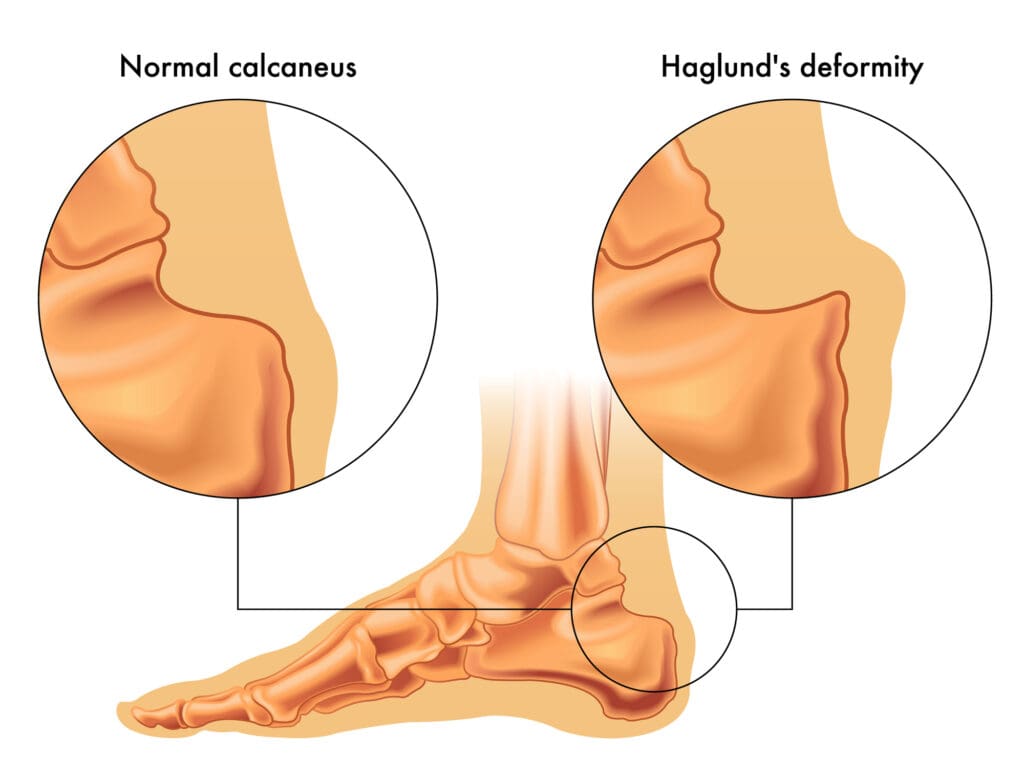
Causes of Haglund’s Deformity
The bony prominence of the calcaneus (heel bone) that makes up the Haglunds deformity is probably just a natural variation in the shape of the bone (in the same way that all our faces are different). Some people just have a more prominent part of the bone at the back of the calcaneus than others. Ordinarily that would not necessarily be a problem until you put shoes on that put pressure on the bony prominence. The continued pressure from the footwear becomes painful and will irritate and inflame a bursa that develops in the area as a result of that continual pressure.
The more rigid the heel counter of the footwear, the more likely this is to become a problem. That is why sports with rigid footwear or boots such as ice hockey and skiing can be a significant problem for those with a Haglund’s deformity.
Symptoms of Haglund Deformity
The symptoms of Haglund’s deformity are usually somewhat obvious – there will be a prominence of the bone at the posterior, superior and lateral aspect of calcaneus. There will be pain and tenderness in the area that are made worse by the shoes. The inflamed bursa can be palpated with a feeling of the ‘soft tissue’.

The enlarged prominence can be seen an x-ray, as well as some of the soft tissue changes associated with the bursitis.
Differential diagnosis: – insertional Achilles tendinitis; calcaneal stress fracture; bursitis from an inflammatory arthritis.
Treatment of Haglunds Deformity
The treatment of Haglund’s deformity is somewhat logical: if pressure from the footwear is the cause of the problem, then to fix it, you need to get rid of that pressure.
How to remove pressure off a Haglund deformity:
- Go barefoot or get into open heel footwear. This is a really effective way and could be a short term measure to help the symptoms settle before using other strategies in the medium to long term or it could be a long term change in your footwear choice. If you area a runner, there are now many running shoes available that have quite flimsy heel counters so are good for this.
- Add a heel raise. Sometimes something as a heel raise can lift the bony prominence up and move it away from the area of high pressure that comes from the heel counter of the shoe.
- Felt padding can be used. The padding can be a ‘U’ shape or shaped like a donut with a hole in the middle. The idea being that this gets pressure off the painful area. This could be stuck on the foot (short term) or inside the heel counter on the shoe (short to medium term). Long term, pads that are more long lasting than the adhesive felt such as from poron or EVA can be fashioned and glued into the footwear.
- Silicon gel sleeve protector pads can be used. These are like a sock and have a thin layer of silicon gel that covers the back part of the heel bone and cushions the area and reduces the rubbing or friction. Ice hockey players really seem to like these.
- Modify the heel counter. It may be possible to make modifications to the heel counter area of the shoe to reduce the pressure. This is commonly done in with ice skates and ski boots. Ice skate and ski boot fitters are very valuable and help in getting this right.
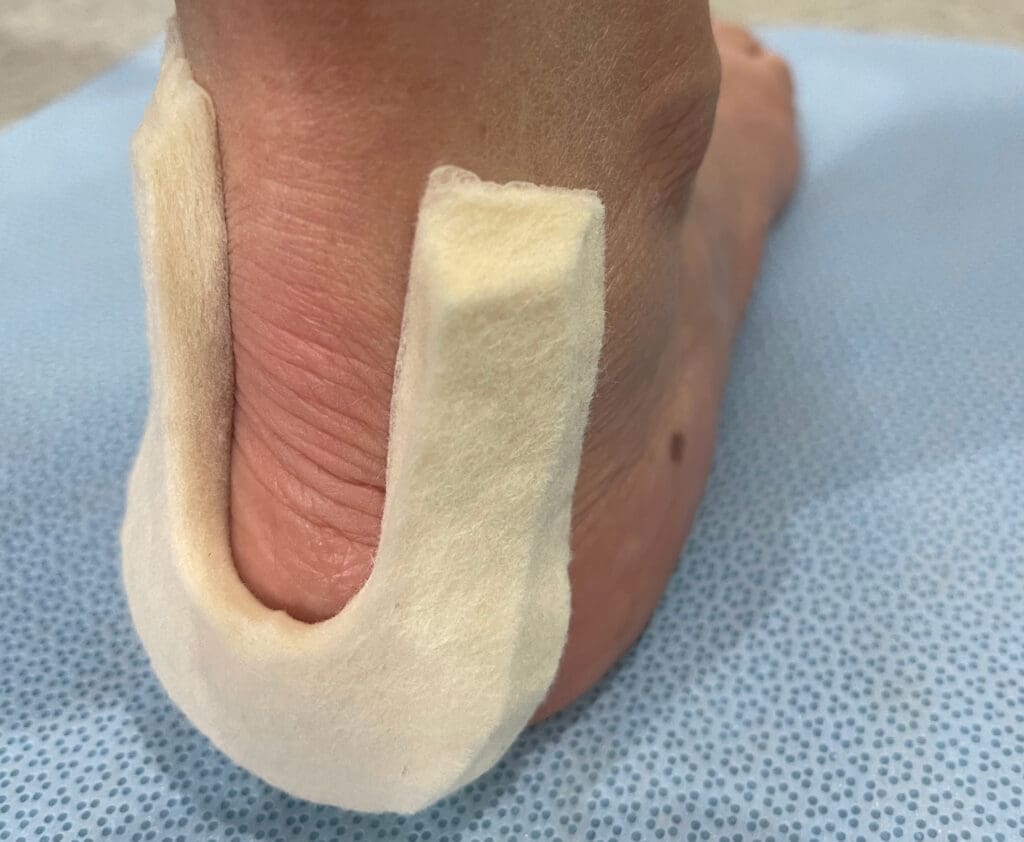

Symptomatic management:
While pressure reduction is the mainstay of the management of a Haglunds, there are many times in which the pain is somewhat acute and the bursa is quite inflamed and needs other strategies to settle it down. This might mean the use of ICE packs, NSAID’s and a cortisone shot into the inflamed bursa. On rare occasions the bursa may need to be aspirated (have the fluid in it removed).
Surgical:
Probably the most effective way of getting the footwear pressure off a Haglunds deformity is to surgically remove the inflamed bursa and cut off (resect) the bony prominence. Sometimes a wedge osteotomy of calcaneus to change pitch of the heel bone is done. While this might sound simple, it is a bit complicated as the Achilles tendon attaches to the bone prominance so surgery is going to be a bit tricky becasue of that, so really should only be considered if the non-surgical approaches are not helping.
Forum Discussions on Haglund Deformity
Haglunds in an elite marathon runner
Surgery for Haglunds / Retrocalcaneal Bursitis
Haglunds deformity
Haglund’s Removal
Personal Opinion on Haglund’s Deformity
While just doing some fact checking for some of the above and looking around Google searches on Haglund’s, I was very surprised about how strongly and how often exercises are recommended for Haglunds problems. Haglund’s is due to a bony prominence and pressure from the footwear. There are no exercises that can take away the bony lump and there are no exercises that can stop the shoe rubbing, so I have no idea why there is so much advice to do exercises! If anyone who reads this and recommended exercises for Haglunds, could you please contact me and explain what you think the mechanism is by which the exercises reduce the bony lump and stop the footwear pressure? – I want to try and understand why people think exercises help. I know that there is no published scientific research on this, so I won’t ask for that. I wrote about that here.
There is some suggestion that those with tight calf muscles may get more movement of the foot inside the shoe as the heel comes off the ground and rubs more against the shoe. Having said that, I have never been able to fix someones Haglunds with stretching as the bony lump is still there regardless of how much you stretch the calf muscles. Even if it was possible to reduce some movement of the the heel bone with calf stretches (and the calf muscles would have to be tight in the first place!), its not going to do anything in the short and medium term for the symptoms and is only going to be of any use in the longer term, assuming it can help! Stretching takes a long time and needs compliance.
Oh, and I do have some empathy for those with this as I do have a mild Haglund’s myself. As long as I am careful re shoes, I tend not to have any problems. The only problem I do have with this, is that on one heel I have a scar from when a steel gate was blown shut by the wind as I walked through it and it whacked the back of my heel!
Author
University lecturer, runner, cynic, researcher, skeptic, forum admin, woo basher, clinician, rabble-rouser, blogger, dad.
